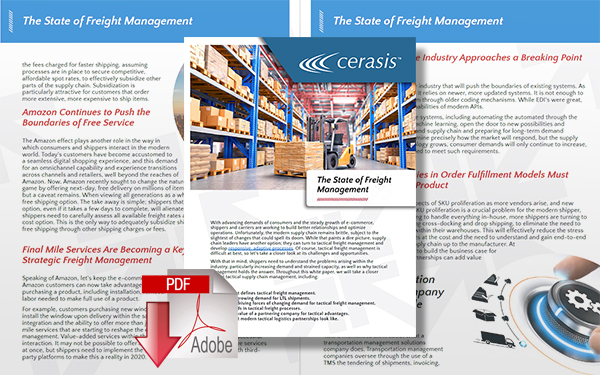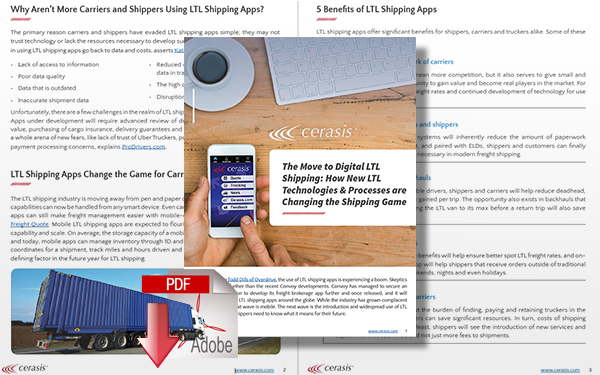The Tactical Freight Market
The current freight market continues to ramp up in anticipation of the most active returns season of the year.
The strong demand for more freight continues to grow, and consumers have divine expectations for the performance of supply chains.
There was a time when tactical freight management referred solely to the day-to-day operations that occurred in the perseverance of short-term performance.
Unfortunately, the current freight market is unresponsive to this model, and shippers that wish to stay competitive need to understand the actual state of the tactical freight market and how it will shape supply chain strategy for the coming years.
What’s Happening with the State of the Tactical Freight Market in 2019?
The tactical freight market includes domestic and international shipments across all modes and countries.
While spot rates rose to record levels in 2018, today’s spot rates have declined.
According to Zipline Logistics, average van rates rose to more than $2.25/mile in June 2018, but so far, they have only peaked at $1.89 in 2019.
Remember, tactical freight management traditionally focused on managing the demand for today. Still, with the peak season around the corner, growth in the market hints at the need to redefine tactical needs as both a short-term and long-term component of freight management strategy.
Areas of Concern Remain Top of Mind for Shippers, LSP’s and Third-Party Providers
As explained by John Schultz of Logistics Management, US business logistics costs rose to 11.45% in 2018, representing 8% of GDP. While warehousing and inventory carrying costs, as well as carrier support costs and administrative fees, rose enough to worry shippers, between 3% and 5.3%, transportation costs continue to form the majority of logistics spend.
Read: The State of Logistics in 2019: What's Next?
Tight capacity in 2018 created significant rate increases, and shippers were almost unable to manage their spend. The strong demand for the industry led to an ultimatum for shippers, implement a dedicated fleet, or achieve “Shipper Of Choice” status.
Similar trends exist for logistics service providers (LSPs) and third-party services as well, representing the increased uncertainty in the US and fears over the wake of a US-China trade war. The caution exercised by corporations in 2018 pave the way for strong growth in 2019, and while talk of the recession continues, all indicators point to industrywide growth.
Moreover, transportation industry participants have developed new management models to reap additional capacity, such as the use of intermodal shipping, especially rail, to improve sustainability and not outsmart themselves.
What Does the Future Hold for the Freight Market in Domestic and International Transactions?
The future of the tactical freight market is shaky. All power rests in the hands of shippers and LSPs. As more companies look to invest in technology and reduce operating expenses, such as the implementation of autonomous mobile robots, shippers will need to make more tactical decisions that affect traditional areas of strategy.
In a sense, strategic supply chain management revolves around making plans, and tactical freight management is how those plans translate into action and benefits for the company.
Now, many companies, particularly shippers, will likely see higher than average inventory and warehouse costs for 2019 following the trade tensions with China, explains Steve Banker of Forbes. Yet, transpacific carriers have benefited from these tensions, seeing substantial increases in their rates.
This fact alone means shippers must take preemptive action to secure more capacity and diversify carrier networks to stay competitive.
Preparedness and Tactical Advantages Will Separate the Trendsetters from Those That Fall Behind
Shippers are already in the process of overhauling their supply chain management strategies for 2020. As the next US presidential election looms, uncertainty over the future of US trade will grow more severe.
Shippers need to take steps now to prepare for an uncertain future, guaranteeing they will have access to available capacity, competitive rates, and a full breadth of carriers.
To put it more simply, shippers need to start using an advanced TMS as soon as possible to handle day-to-day operations and reap long-term results.
Related Article: State of Inbound Logistics for Over-the-Road Freight Shippers
Related White Papers
The State of Freight Management New!
This exclusive and educational resource “The State of Freight Management” white paper is a must-read for freight shippers who are looking to improve freight operations. Download Now!
The Move to Less-than-Truckload Digital Shipping
While the industry has grown complacent with Less-than-Truckload TMS, the next wave is mobile, the next wave is the introduction and widespread use of Less-than-Truckload (LTL) shipping apps, and shippers need to know what it means for their future. Download Now!
More Cerasis Resources
Article topics
Email Sign Up





















